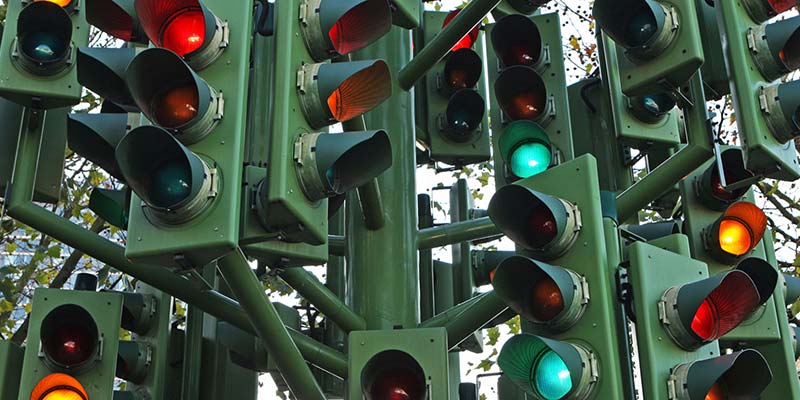The global bond market is almost twice as big as the world stock market in value terms yet it seldom gets mentioned in the press. When equities fall sharply, the headlines blare “billions wiped off share prices”, etc. When was the last time you saw any mention of movements in bond markets in the popular press? Probably never unless you read the financial pages.
Why is this? Possibly because of the peculiar jargon used by bond market professionals. Recently, for example, financial markets have been concerned by the news that the “yield curve has inverted”, a phenomenon normally only seen prior to recessions. What does this mean and should you be worried?
The yield curve is simply a line showing the cost of borrowing over time. Normally it goes up from right to left because investors generally are prepared to take a lower yield over, say two years, than they would accept for having their money tied up for 10 years. When bond yields invert, the line slopes downwards with investors so worried about the economic outlook that they pile into short-term bonds and interest rates on these instruments are higher than those paid by long-term bonds.
This phenomenon has happened twice in recent weeks to the yield curve on US treasuries. These are bonds issued by the American government and they are considered to be the safest investment in the world. Markets have taken the news as a harbinger of a US economic recession. That almost certainly means a global downturn since the US accounts for nearly a quarter of the world’s economic output. Worsening US-China trade relations and concerns global growth is slowing following weak Chinese and German economic data are the main factors driving this yield curve inversion.
All nine major US recessions since 1950 have been preceded by an inversion of the yield curve although it can take up to three years for a recession to hit after the curve inverts. So, is a recession inevitable? Definitely not. Bond markets and central bank monetary policy are very different today from when the yield curve has inverted in the past.
For example, central banks today are engaged in the massive experiment of Quantitative Easing, effectively printing money to stimulate economic growth, while they have also taken interest rates down to historical lows in the wake of the global financial crisis. Indeed, in many parts of the world we have reached the astonishing situation where interest rates are negative and people are paying banks to look after their money.
During the past 10 years, every time financial markets have signalled that economic growth might be slowing, central banks have acted aggressively to ward off that threat. That will almost certainly happen again with both the US Federal Reserve and the European Central Bank tipped to take further action in the coming months.
Moreover, the yield curve has in the past generally inverted when the US central bank has been in the process of raising borrowing costs to clamp down on inflation. This time we are in the opposite situation. The Federal Reserve cut interest rates in July for the first time in more than 10 years and will almost certainly reduce borrowing costs by a quarter point again in September. Indeed, the bond market may simply be telling the central bank that it should cut interest rates faster and more sharply than it is currently doing.
In addition, the increasingly negative yields on bonds outside the US has encouraged foreign investors to seek refuge in short-term US treasuries, so driving down the price as demand increases. When the price of bonds falls, yields on those bonds rise (see inset for an explanation).
Global leading indicator still on green
Movements in the Baltic Dry Index (BDI) can also foretell whether a global recession is on the cards. The index measures the current freight cost for shipping bulk cargo, often raw materials used in making end products such as steel. So, fluctuations in the BDI can provide a good indication of future economic activity. Currently the BDI is surging upwards. Finally, various indicators suggest the US economy continues to perform strongly. Consumer spending remains robust and unemployment continues to sink. If those trends go into reverse, then it will be time to get worried!
A bond market primer
A bond is simply an IOU. So, you may agree to lend the US government 100 dollars for 10 years in return for which Washington agrees to pay you five dollars per year in interest over 10 years and to return the 100 dollars to you at the end of that time frame. The bond market exists so that if you suddenly need those 100 dollars you can sell the bond on to another investor.
But the price of that bond will vary over those 10 years, the level of interest rates being the key influence. So, suppose for the sake of argument the Federal Reserve has set interest rates at 2% when you lend the government those 100 dollars, but four years later interest rates have shot up to 8%. The 5% interest rate you are getting on your 100 dollars no longer seem very attractive when you can get 8% just by leaving your money on deposit in a bank.
So, an investor may be willing to pay just 50 dollars for your 100-dollar bond on the secondary bond market. At that price, an investor will find your bond attractive because the five dollars the government is paying you in interest will represent a 10% yield. That is an extreme example but hopefully it explains why bond prices and yields always move in opposite directions. When the price of a bond goes up, the yield goes down and vice versa.
By Anthony Beachey
|| features@algarveresident.com
Anthony Beachey is a former BBC World Service journalist now working on a freelance basis in Portugal, where he specialises in economics and finance.


























